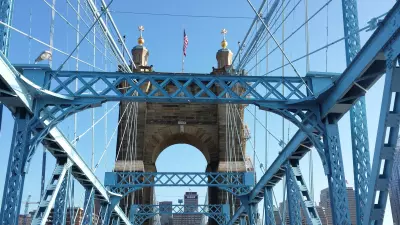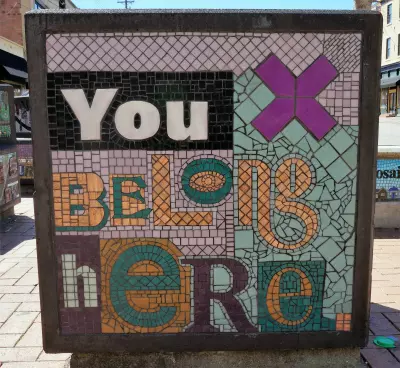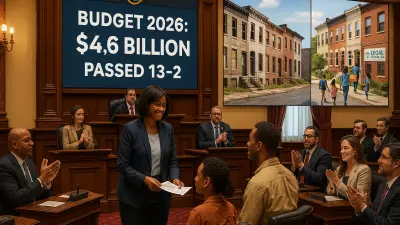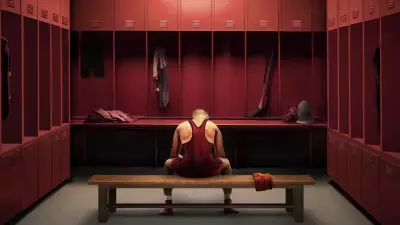Postindustrial Columnist Jill Morenz highlights Covington, Kentucky, as a definitive example of how thoughtful, long-term reimagining can transform a city.

In 1983, USA Today called Covington, Kentucky, America’s “Most Blighted City.”
However, by 2024, Money magazine named it one of the “50 Best Places to Live in the US.”
This is the story of a city reborn.
Covington sits at the state’s northern tip, across the Ohio River from Cincinnati. It’s known internationally as part of the Gateway to Bourbon Country and for its iconic John A. Roebling Bridge.
The ups and downs of this city of 41,000 are largely due to megatrends that have swept the nation over the years. Once labeled “Most Blighted,” it’s now experiencing an upswing, thanks to these broader trends and to what Covington’s new Mayor Ron Washington calls “vision and grit,” along with the concerted efforts of a dedicated community.
Covington was incorporated in 1815. Its population grew slowly for 15 years until an influx of German immigrants settled there.
Like many industrial riverfront cities, Covington was a hub for industry, including iron mills, glassworks, and shipping by rail and barge. It also built wealth by distilling bourbon and processing tobacco.
During this time, Covington developed a robust financial district and a bustling shopping district with department stores, restaurants, saloons, theaters, and offices. The city’s population peaked in 1930 and remained relatively steady for the next twenty years.
But by the 1950s and ’60s, Covington’s population began to decline. Joseph Meyer, who served as Covington’s mayor from 2017 until earlier this year, attributes this decline to three megatrends:
- suburbanization
- construction of the interstate road system
- popularity of shopping malls

The bold and picturesque Roebling Suspension Bridge connects Covington and Cincinnati across the Ohio River
From Setbacks to Strength
Suburbanization, or “urban flight,” saw many people leaving cities to live in nearby suburbs, primarily due to the availability of larger housing lots and favorable tax rates. This attracted families who wanted more room and safety for their children.
The interstate system made car ownership more desirable and made it easier to traverse the suburbs’ longer distances from home to school, work, stores, and churches. Walkability was neither possible nor desired outside the urban core.
Shopping malls were another strike against urban cities, as their sprawling architectural style required much land, which is typically found in the suburbs.
The nationwide decline of U.S. industry, especially in the “Rust Belt” states, was also a factor driven by the energy crisis of the 1970s and rising global competition. As factories shut down, people moved away from city centers, and with most voters now in the suburbs, tax revenues followed, leaving urban areas with aging infrastructure and less competitive urban schools.
In the late 1970s, a new community ranking system from the U.S. Department of Housing and Urban Development cast a harsh spotlight on Covington. The criteria were shortsighted and penalized cities for traits now seen as assets, like historical architecture.
As a result, Covington’s older buildings contributed to a low national ranking. When USA Today reported the results, Covington residents and leaders focused on the revitalization efforts already underway, demonstrating the “vision and grit” that continues to shape the city’s transformation today.
Urban Revitalization Begins
In 1995, a comprehensive 25-year strategic vision for Northern Kentucky was created, identifying several core objectives. One of the objectives was revitalizing the urban core, including Covington, with a newly created nonprofit called the Catalytic Fund spearheading the effort.
Today, the Catalytic Fund continues to make strategic investments in high-quality, high-impact real estate development and redevelopment projects. In Covington, these include historic building renovations and mixed-use, commercial, and residential properties.
Nearly four dozen projects have been completed in Covington alone, including the transformation of Covington’s first skyscraper – which originally housed Coppin’s Department Store – into the 116-room upscale boutique hotel, Hotel Covington.

Just one of many public art Mosaics in Covington
The Power of Small Business
Economic Development Director Tom West sees entrepreneurship as a long-term investment in the city’s future, helping startups grow and stay rooted in the community. His strategy includes incentives like rent subsidies for commercial tenants, façade improvement grants, business coaching, assistance finding commercial spaces, and connecting businesses with potential customers.
Former Mayor Meyer summed it up well, saying, “Investors who don’t live in the area make their money and move on, but the barber and the small business owners are still here. These small businesses create the environment that people find so attractive.”
Historic Preservation as an Economic Driver
The pendulum swing of national megatrends is now working in favor of cities like Covington, placing value on history, diversity, walkability, and quirkiness. Millennials and empty nesters alike are seeking urban areas, citing reasons such as lower reliance on cars, the density of dining, shopping, and entertainment options, and reduced time needed for home and yard maintenance.
There is also a growing demand for older homes. For many, especially those raised in suburban homes, the inherent charm of historic homes is appealing. This demand has increased home values and boosted tax revenue in cities like Covington.
But new homeowners are contributing more than money – they’re improving curb appeal, volunteering locally, and supporting nearby shops, restaurants, and services – creating a strong sense of neighborhood pride. That support helps small businesses not just survive but thrive.
Covington now has 17 National Registered Historic Districts and Kentucky’s second-highest properties listed in the National Register of Historic Places.
Community, Culture, and Quality of Life Today
Today, Covington is a community defined by connection and character. It is a welcoming city that offers a “sense of place” that attracts visitors, develops loyalty from residents, and encourages investment.
It has a long history of supporting public art, from the vibrant murals and statues along the riverfront to community mosaic projects and festivals. Its boutiques, craft breweries, and unique restaurants have created an authentic and inviting cultural scene. Its walkable neighborhoods, historic architecture, and accessibility to Cincinnati also make it appealing.
Covington’s transformation results from decades of determination, collaboration, and a community that has refused to be defined by decline. What once worked against the city has become its greatest strength.
Mayor Washington best explains the upswing:
“Today, headlines describe Covington as ‘vibrant,’ ‘charming,’ and ‘affordable.’ How did that happen? Through vision and grit. We identify opportunities, build relationships, and work collaboratively to achieve great things. We’re proud of our hard-earned resurgence, and we’re excited about our future, and our work continues.”







